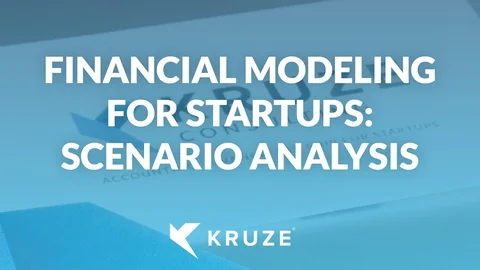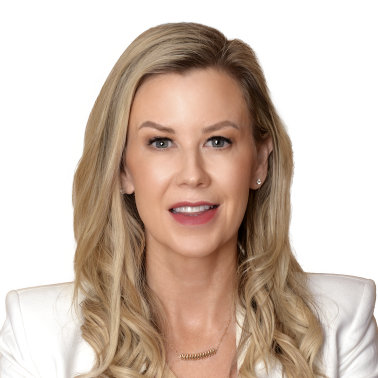
Scenario analysis is a specific aspect of financial modeling that lets you evaluate the possible impacts of different events on your startup.

It’s a strategic tool that helps startups prepare for different possible futures and financial implications. And once you map out the implications of possible futures, you can start preparing for the “what ifs.” Scenario analysis is particularly important to startups, since you face volatile markets, uncertain product development timelines, regulatory changes, advances in technology, and many other uncertainties.
Done correctly, scenario analysis helps you make informed decisions, quickly pivot your business strategies, manage and mitigate risks, and communicate potential risks and opportunities to your investors.
Introduction to building projections for startups
Financial modeling is the process of creating a projected representation of a company’s financial performance. For startups, it helps forecast future financial results based on historical data and assumptions about future conditions. Based on your current data and business assumptions, your financial model can help you predict revenue, expenses, cash flow, and your key performance indicators (KPIs) over a period of time (usually one to five years).
A financial model builds out your strategy and vision for your startup, putting numbers to your plan. A solid model allows you to:
- Make informed decisions based on projected financial performance
- Manage your limited resources and effectively allocate your budget
- Attract investors by presenting clear and compelling financial forecasts
But if one set of projections are good, several are even better. Scenario analysis, a key component of financial modeling, involves creating multiple financial projections based on different sets of assumptions, allowing startups to prepare for various potential futures. By looking at a range of potential outcomes, you can:
- Identify potential risks and opportunities that might not be obvious in a traditional forecast, so you can develop contingency plans and proactively address challenges
- Be ready to track your progress against different sets of milestones, so that you can more accurately understand if your business is meeting expectations
- Evaluate the impact of changes in market conditions, new technology, government regulations, or your customers’ behavior
- Demonstrate to your stakeholders that you understand and are planning for market realities
The basics of startup financial models
Financial plans and models are important tools for making business decisions, raising funds, and building a strategy for your startup. A comprehensive startup financial model typically includes several key components:
- Revenue projections. Estimating your startup’s future income gives you insights into potential growth, cash flow, and profitability. By including variables like customer acquisition rates, pricing strategies, and market conditions, revenue projections help you set realistic business goals.
- Cost structure analysis. A systematic evaluation of all the expenses associated with your startup, cost structure analysis lets you allocate resources, price your products, and identify break-even points. By categorizing and reviewing both fixed and variable costs, you can understand how cost components like salaries, rent, materials, and production expenses affect your financial performance.
- KPIs. For most startups, this will be customer metrics such as data on customer acquisition, ACV, retention, and churn rates.
- Cash flow forecasts. By creating detailed projections of expected cash inflows and outflows over specific periods, you can create a comprehensive view of your startup’s liquidity, and anticipate cash shortages or surpluses. That, in turn, helps you manage the timing for fundraising rounds, hiring, capital expenditures, and investments.
- Balance sheet projections. Your balance sheet shows your assets, liabilities, and equity at a specific point in time. Forecasting key elements of your balance sheet, like cash reserves, accounts receivable, inventory, debt, and shareholder equity show your startup’s expected financial health, and how you expect your company to evolve.
These components work together to provide a comprehensive view of a startup’s financial health and potential. The accuracy and reliability of these models heavily depend on the quality of the assumptions you make, which is where scenario analysis becomes very important. By altering critical assumptions in your financial model, you can evaluate the impact of changes that might happen.
What scenarios should you analyze?
Scenario analysis is a method of analyzing potential future events by considering alternative possible outcomes. For startups, it’s a vital tool for managing uncertainty and risk. Typically, scenario analysis involves creating at least three scenarios:
- Base case. This is the most likely outcome based on current data and market conditions.
- Best case. An optimistic projection that reflects your startup’s potential upside, including things like rapid customer adoption or favorable market conditions.
- Worst case. A pessimistic projection that includes significant challenges like economic downturns, increased competition, regulatory issues, or product delays.
By exploring these different scenarios, startups can better prepare for various future outcomes and make more informed decisions.
Implementing scenario analysis in startup financial models
To effectively implement scenario analysis, startups should follow a structured process:
- Define the scope and objectives. Clearly articulate the specific decisions that you need to address with your scenario analyses. You should also establish a relevant time horizon that matches your strategic plan.
-
Identify key variables and drivers. You need to pinpoint the factors that could affect your startup’s future. These factors can include:
- External conditions like market trends, regulatory changes, economic shifts, technological advancements, and your competitive environment.
- Internal factors like your product, development cycle, core competencies, and growth potential.
- Important financial variables like sales volume, pricing strategies, and operational costs.
- Quantify the financial impact. You’ll need to start with your baseline financial model, and then adjust variables like revenue projections, expense projections, and cash flow forecasts for each scenario you model.
-
Analyze implications and consequences. Each scenario will affect your startup‘s financial health, growth trajectory, and overall strategy. As you work through various scenarios, consider:
- Which scenarios best align with your objectives?
- What are the potential risks and opportunities for each scenario?
- How does each scenario affect your KPIs?
- Develop strategic responses. For each scenario you model, outline potential strategies and plans. That way you’ll be able to react more quickly and make better decisions if real-world developments match your scenarios.
This process allows startups to systematically explore different futures and understand their potential impacts on the business.
For example, for startups in regulated industries like fintech or healthcare, we often create scenarios around different regulatory approval timelines. If approval takes six months longer than expected, how does that affect burn rate and runway? This helps founders plan their compliance resources and not over-spend prior to understanding how long it will take to reach regulatory approval – an important fundraising milestone.
Benefits of scenario analysis for startups
Scenario analysis offers numerous benefits for startups. In an uncertain environment, you can use scenario analysis to prepare for different outcomes. You build your credibility with stakeholders by demonstrating that you’re strategic, have foresight, and understand your startup’s business landscape. Benefits of scenario analysis include:
- Improved decision-making. By considering multiple potential outcomes, startups can make more informed strategic decisions.
- Risk management. Identifying potential risks in different scenarios allows for better risk mitigation strategies.
- Strategic planning. Scenario analysis helps in allocating resources more effectively based on different potential futures.
- Investor communication. Scenarios can improve your credibility with investors by demonstrating thorough planning and risk awareness.
- Knowing which path you are on. If your sales are hitting the upside scenario, you know that you should capitalize on this momentum by accelerating your growth strategies and looking for expansion opportunities. If you’re tracking to the downside scenario, you can implement your contingency plans, like freezing hiring, cutting expenses, exploring other revenue streams, or pivoting your business model.
Pre-revenue startups: Scenario models can really help with resource allocation
When a startup is pre-revenue, projecting when the first revenue (and cash from that first customer) will hit can be really challenging. One scenario exercise that can be helpful is to have large differences in when the first revenue starts – founders can use this to understand the impact on their cash-out date. And how that converges with their fundraising timeline – will they have enough revenue to be a solid fundraising candidate?
By varying your revenue start dates, you can more effectively assess:
- How delayed revenue impacts your burn rate
- How long your current resources will last under different circumstances
- What funding you need to explore to extend your runway if your revenue is delayed
Considering different revenue scenarios also help your startup prioritize the resources you may need, such as:
- Identifying which resources are critical to reaching revenue milestones
- Adjusting your timelines for key hires or investments
- Accelerating or delaying sales and marketing strategies
Common pitfalls in scenario analysis
While scenario analysis is a powerful tool to make strategic decisions, there are several pitfalls you should avoid:
- Overreliance on a single scenario. Often startup founders and CEOs focus too heavily on a specific scenario (usually the best-case scenario), and those unrealistic expectations can lead you to make poor decisions.
- Neglecting to update models regularly. Scenario analysis isn’t a one-time task. You should schedule time to regularly review your assumptions and update them if necessary. It’s important to make decisions based on current data.
- Failing to consider interdependencies between variables. Many variables that you model will affect other variables, like how economic conditions affect consumer spending. Understanding and accurately modeling these interdependent variables is important for creating realistic scenarios.
- Ignoring qualitative factors. Market trends, competition, regulatory changes, and technological disruptions can all affect your startup’s growth trajectory. Your scenarios need to incorporate these types of factors into your projections.
To avoid making these mistakes, you need to follow a balanced approach to your scenarios, regularly review and update your models, and consider both quantitative and qualitative factors in your analysis. This is kind of abstract, so let’s look at a couple of examples of scenario analysis in action.
SaaS startup pricing strategy analysis
Interdependent variables are linked, and when one variable changes it affects others. For example, a SaaS startup that’s modeling different pricing strategies needs to consider:
- Subscription price
- Customer acquisition cost (CAC)
- Customer lifetime value (CLV)
- Customer churn rate
- Market demand
All of these variables influence each other:
- Increasing the subscription price may generate higher revenue per customer but could increase churn and decrease market demand.
- Higher churn reduces CLV, which means you may have to spend more on CAC to maintain growth.
- Increasing CAC spending may improve market demand but an increase in CAC will affect your profitability.
Aggressive growth scenario
Continuing with this analysis, let’s assume your SaaS startup decides to pursue an aggressive growth strategy by lowering prices and increasing marketing spend. Specifically:
- Subscription prices are reduced by 20%.
- Marketing budget is increased by 50%.
If those variables are adjusted, then other variables would likely change as well:
- Lower price may lead to increased market demand and improve new customer acquisition. Assume new customers double.
- Increased marketing spending will raise the CAC. So we’ll increase the CAC by 30%.
- Lower price and better acquisition should reduce churn. We’ll reduce churn by 15%.
- Your CLV will go down due to the lower price, but should be partially offset by reduced churn.
NOTE: You’ll have to consider the effects of changing the variables and adjust the outcomes based on your knowledge of your market, your customers, your competitors, and other factors. For example, based on input from sales, you may feel that lower pricing would reduce churn by 20% rather than 15%. The important thing to remember is that lowering your prices should reduce churn – if you don’t take that into consideration, then your scenario will be less accurate.
Premium pricing scenario
In this scenario, you’re assuming that your product is strong enough that your startup can charge more than your competitors. So you make the following assumptions:
- Subscription prices are increased by 30%.
- Product features are enhanced, requiring a 40% increase in development costs.
The effects of these assumptions could be:
- Higher prices lead to a 25% reduction in new customer acquisition.
- Improved features reduce churn rate by 10%.
- Your CLV increases due to higher prices and lower churn.
- Your market demand shifts to customers that are larger with higher revenue, so you’ll need to refocus your marketing efforts.
Some of the challenges you’ll face with scenario analysis is that as the number of variables increases, so will the complexity of your models. It’s also difficult for startups, with limited historical data, to predict how changing one variable will affect others. It’s helpful to consult industry experts to validate your assumptions on how different variables interact.
Best practices for effective scenario analysis
To maximize the benefits of scenario analysis, startups should:
- Develop diverse scenarios. You should develop at least three plausible scenarios that reflect different combinations of the key variables and drivers that affect your business.
- Regularly review and iterate your models. Continuously refine your scenarios and adjust your inputs as your startup’s circumstances change. This will help you track which scenario is the best match for your situation and allow you to adjust your strategies and reallocate your resources. You may need to drop scenarios that aren’t relevant any more, and replace them with other scenarios. For example, if you’re tracking to your best-case scenario, that’s great! In that case your most likely scenario may become your worst-case, and you’ll need to develop a new best-case scenario.
- Incorporate both quantitative and qualitative data. A broad set of data will improve the accuracy of your scenarios. Information like current market trends, historical data, customer feedback, and expert opinions will provide a wider pool of data to inform your scenarios.
- Engage cross-functional teams in the process. Stakeholders from various departments can give you important insights, so you should include input from product development, sales and marketing, finance, operations, and other teams that may be able to provide diverse perspectives.
- Use sensitivity analysis to refine your scenario analysis. Sensitivity analysis isolates the effect of changing one variable at a time. So to continue our example of a SaaS company, once they’ve completed their best-case, worst-case, and most likely scenarios, the team might examine how changes in specific variables, like subscription rates or server expenses, might affect profitability.
- Develop strategies based on your scenarios! Flexible strategies can help you adapt to different outcomes. So a startup SaaS company facing increased server costs might reallocate funding from another area, research alternative providers, look for ways to cut other expenses, explore venture debt funding, or accelerate their fundraising plans.
These practices help make sure that your scenario analysis is dynamic, remains accurate, and helps guide your decision process.
Should you share scenarios with your investors?
This is a tricky question, and the answer is “maybe.” You may want to share your scenario analysis with your existing investors. You demonstrate foresight, enhance your transparency, spark important discussions, and get your investors’ insights and perspectives. They’ve been through this process with other companies, and they’re probably a good source of ideas. Be careful, though, because presenting a wide array of scenarios can be confusing and overwhelming.
However, when you’re seeking funding and presenting to new investors, you’ll just want to share one, usually the best-case scenario, as long as you’re not setting any unrealistic expectations. You’ll definitely want to showcase the upside of investing in your startup.
If you do share any scenarios with your investors, make sure you clearly communicate your methodology and assumptions to demonstrate transparency and credibility, and make sure you’re ready to discuss any implications of scenarios you present.

We advise against sharing too negative of a scenario, as long as you can do so honestly. You don’t want to “model yourself out of a transaction” by being so pessimistic about the company’s prospects that investors are afraid to invest.
Tools for startup financial modeling and scenario analysis
Now that you understand scenario analysis, how do you get started? Kruze Consulting offers several tools on its website for financial modeling and scenario analysis:
- Free downloadable financial model templates that startups can use for their own financial planning. You’ll be able to adjust inputs and generate scenarios easily.
- Our professional model template, which includes:
- A model tab where you can input various assumptions, like units sold, pricing, cost of goods sold (COGS), headcount, and payroll, projections, headcount, and expenses
- A summary tab showing the income statement and key KPIs
- A graph tab with visual representations of KPIs like revenue growth, headcount growth, and cash burn
- Tips and best practices for building financial models, including advice on creating dynamic three-year models and including financial statements.
These tools are designed to help startups create comprehensive financial models, demonstrate their potential to investors, and make informed business decisions based on various possible outcomes.
Scenario analysis: A powerful tool for startups

Scenario analysis is very useful for startups navigating the uncertainties of the business world. By systematically exploring different potential futures, you develop flexible strategies to address these outcomes. Proactively using scenario analysis allow you to make more informed decisions, manage your risks effectively, and communicate your plans more convincingly to your investors and other stakeholders.








